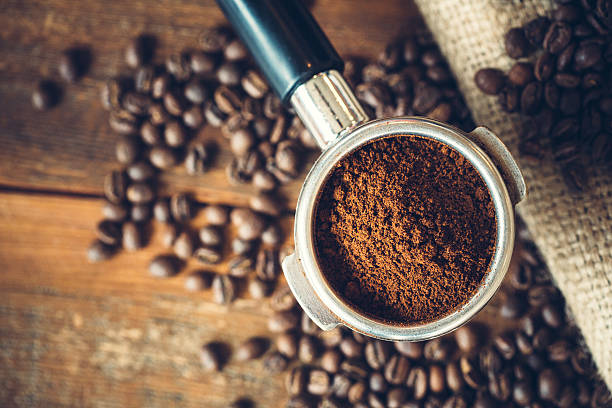December 07, 2022

Coffee beans are roasted so that they can be transformed into coffee as we
know it. They're not anything without the roasting process. Although, the bean
may have all the unique characteristics that we are familiar with in coffee, but
the flavor isn't there until it is roasted.
The roast is being prepared prior to the roast
Coffee beans aren't really beans. They are actually the seeds of a red or
purple fruit that resembles the one of a cherry. They are a certain coffee
species. Beans are referred to as beans due to their appearance and resemblance
to an ordinary bean. The raw coffee bean is green in color and appears
fresh.
There are two types of coffee bean: Arabica and Robusta. Are you aware of the
differences? It is normal however not always to use Arabica coffee beans.
Generally, Arabica coffee beans are better quality than Robusta coffee beans.
They also contain less caffeine.
Roasting coffee beans
From the green bean's early days to the shiny brown bean we're all familiar
with เมล็ดกาแฟ go
through a rigorous transformation process when roasting, affecting both the
physical and chemical components of the coffee bean.
Roasting coffee beans is a method to extract the bean's truest flavours.
Coffee roasting is a complex process that can be tailored to the tastes of the
roaster. Roasters can alter the temperature and timings of their roasts in order
to accommodate different tastes.
Roasting coffee beans is a technique that can be used to enhance the flavor
of your coffee
The art of roasting coffee beans is an art that is subjective to a certain
extent. There are varying methods but all are judged by the final flavour
extracted from the humble coffee bean. The roasting method of coffee beans is
mostly affected by the duration at which they are heated (roasted) that
determines their overall color and taste.
While state-of the-art equipment and facilities can help you get an edge but
knowledge of coffee is what makes it truly special. You can have a different
result depending upon what you want. So, it's important to use your senses and
experience.
Coffee roasters are often the most effective methods for knowing the source
of coffee beans, roasting and being aware of their characteristics during
roasting.
The Science of Roasting Coffee Beans
Apart from the knowledge of an individual and advanced technology, there's
the science that is behind roasting coffee
beans. This is the science that allows coffee beans to be roasted.
There are two types of coffee that are roasted which are volatile and
nonvolatile. The volatile components contribute to the aroma, whilst the
non-volatile elements contribute to the flavor we associate with coffee, like
sourness or bitterness (often determined by caffeine levels).
In the course of roasting during the roasting process, the เมล็ดกาแฟ
undergoes a number of endothermic and exothermic reactions. In the endothermic
phase the energy is absorbed into the form of heat. it's at this point the
coffee beans lose moisture, alter in colour and release bread-like
aromas.
The exothermic phase is when energy being released in form of heat (in this
instance, steam). When the moisture present in coffee beans has evaporated, the
heat will be released through exothermic methods. The bean will crack or pop
when ruptured. In the meantime, the coffee bean is beginning to develop its true
flavors and aromas in addition to acquiring the rich brown colour we all
recognise.
Coffee: Roasted
The process of roasting is what makes coffee coffee. So, in answer to the
question , "Why are coffee beans roasted?' it's quite simple. The เมล็ดกาแฟ
beans, as described in the article, has to undergo several roasting stages in
order to create the beans we love to drink.
In addition The answer to this question may have related to an individual's
love affair with the art and science behind the processes. You could also answer
the question by saying that the coffee demand is growing, therefore coffee beans
should be roasted to satisfy this demand.
Either way, we're just glad that someone back in the 15th century decided to put a few of them in an oven and try out a few experiments.
Posted by: RyleekLindsey at
03:38 AM
| No Comments
| Add Comment
Post contains 703 words, total size 5 kb.
35 queries taking 0.0255 seconds, 60 records returned.
Powered by Minx 1.1.6c-pink.









